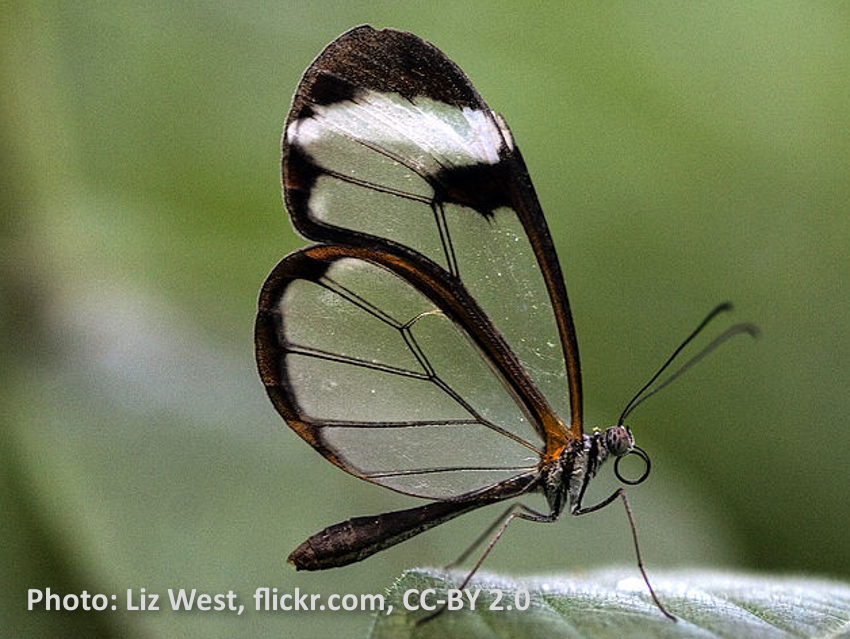Surface-enhanced Raman scattering (SERS) is an extension of Raman spectroscopy and has become a widely used analytical technique. It has become popular because it can provide both single-molecule detection and high-resolution spectroscopic “fingerprints” of complex analytes.
Mingli Wang, Yanying Zhu, Yanshan University, Qinhuangdao, China, and colleagues have created a silver-nanofilm-coated butterfly-wing hybrid material that can be used as a SERS substrate to detect pesticides. The team fabricated these hybrids using wings of glasswing butterflies (Haetera piera), which have a nanostructure composed of crisscrossing nanoplates. The researchers coated wing segments with Ag nanofilms using magnetron sputtering. The nanostructure is preserved in this process.
The team added analytes such as the dye crystal violet or the organophosphorus pesticide acephate onto the Ag-coated surface and performed SERS measurements. The novel hybrid substrates show a high enhancement performance with an enhancement factor of 2.96 · 107. The nanostructured substrates provide high reproducibility, good stability for up to 60 days, and high sensitivity. According to the researchers, the developed SERS substrate could be a candidate for the rapid and reliable trace detection of chemical and biological samples.
- Biomimetic synthesis of Ag-coated glasswing butterfly arrays as ultra-sensitive SERS substrates for efficient trace detection of pesticides,
Guochao Shi, Mingli Wang, Yanying Zhu, Yuhong Wang, Xiaoya Yan, Xin Sun, Haijun Xu, Wanli Ma,
Beilstein J. Nanotechnol. 2019, 10, 578–588.
https://doi.org/10.3762/bjnano.10.59




